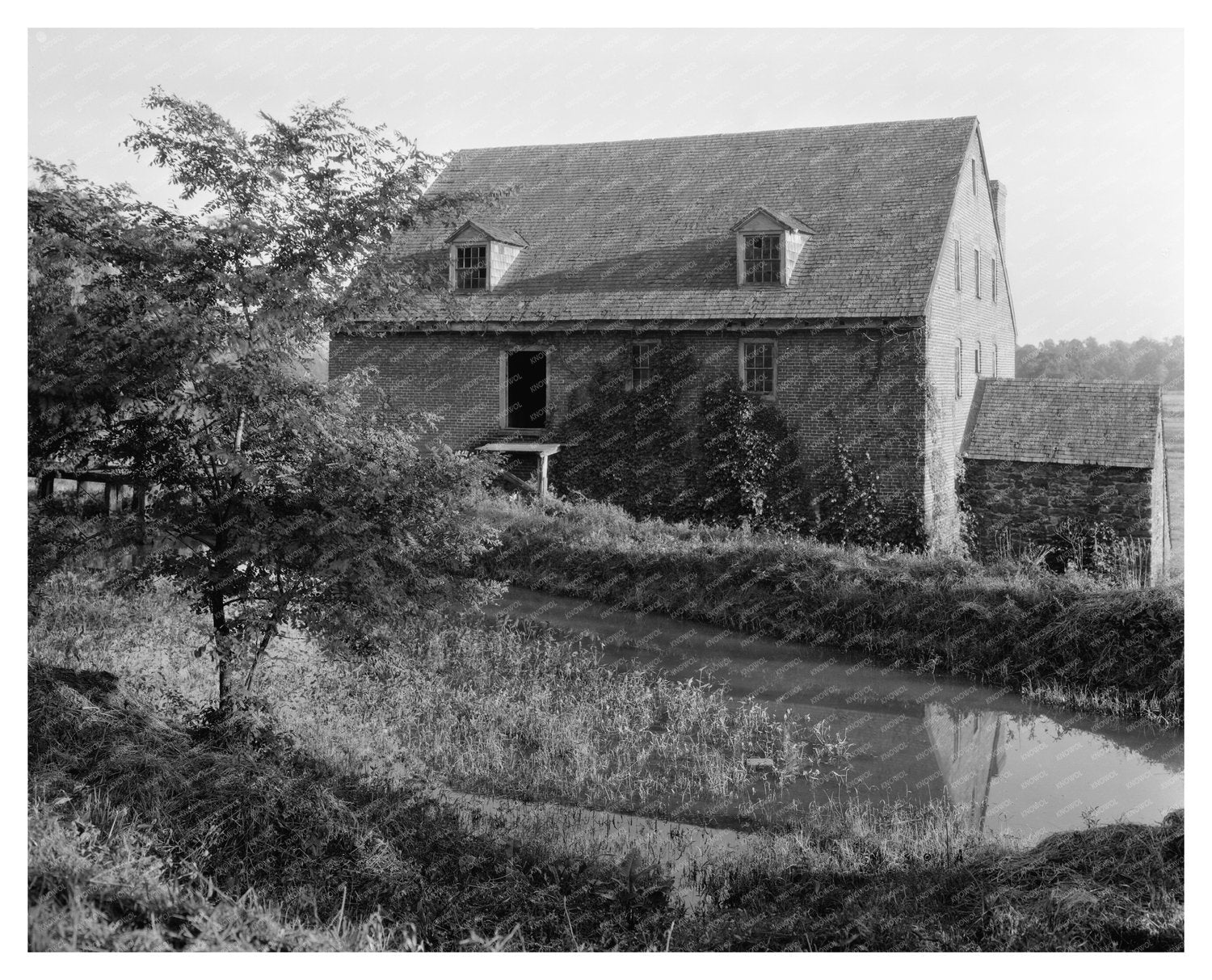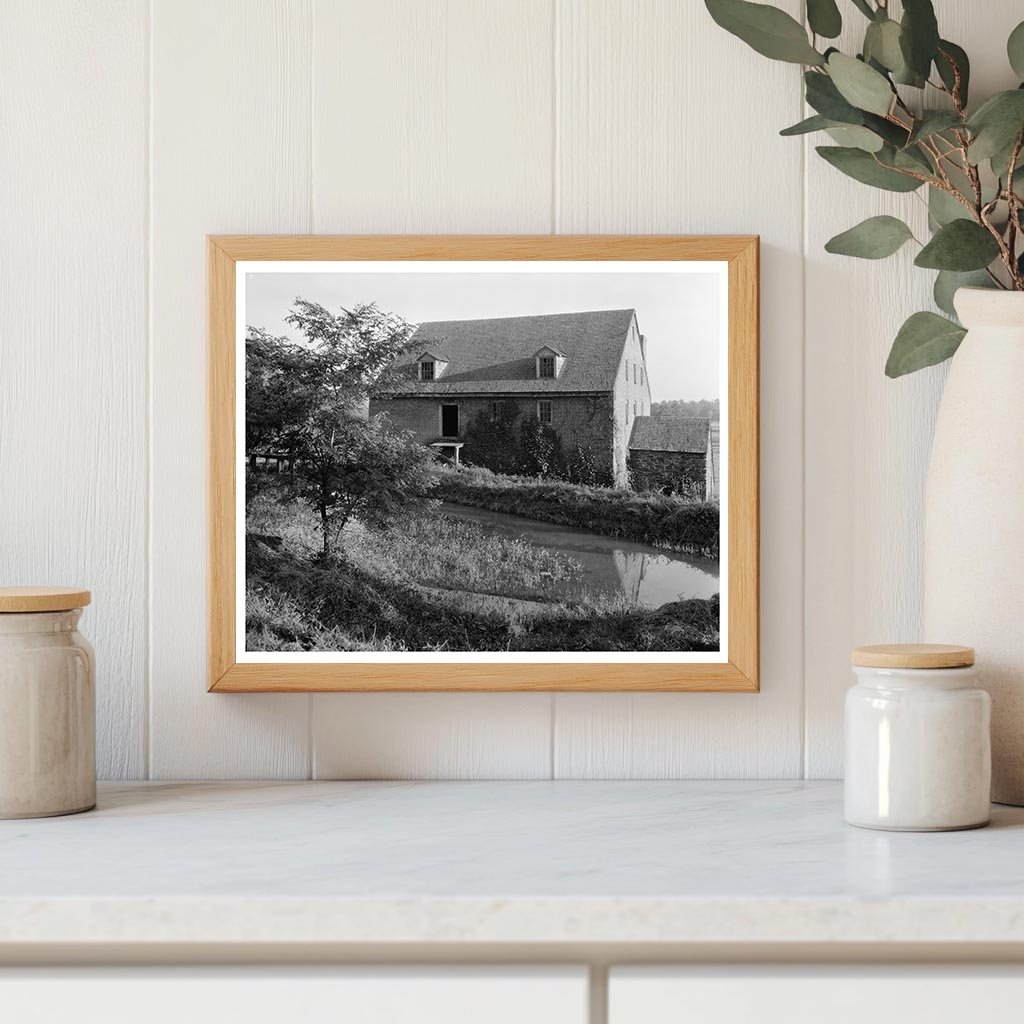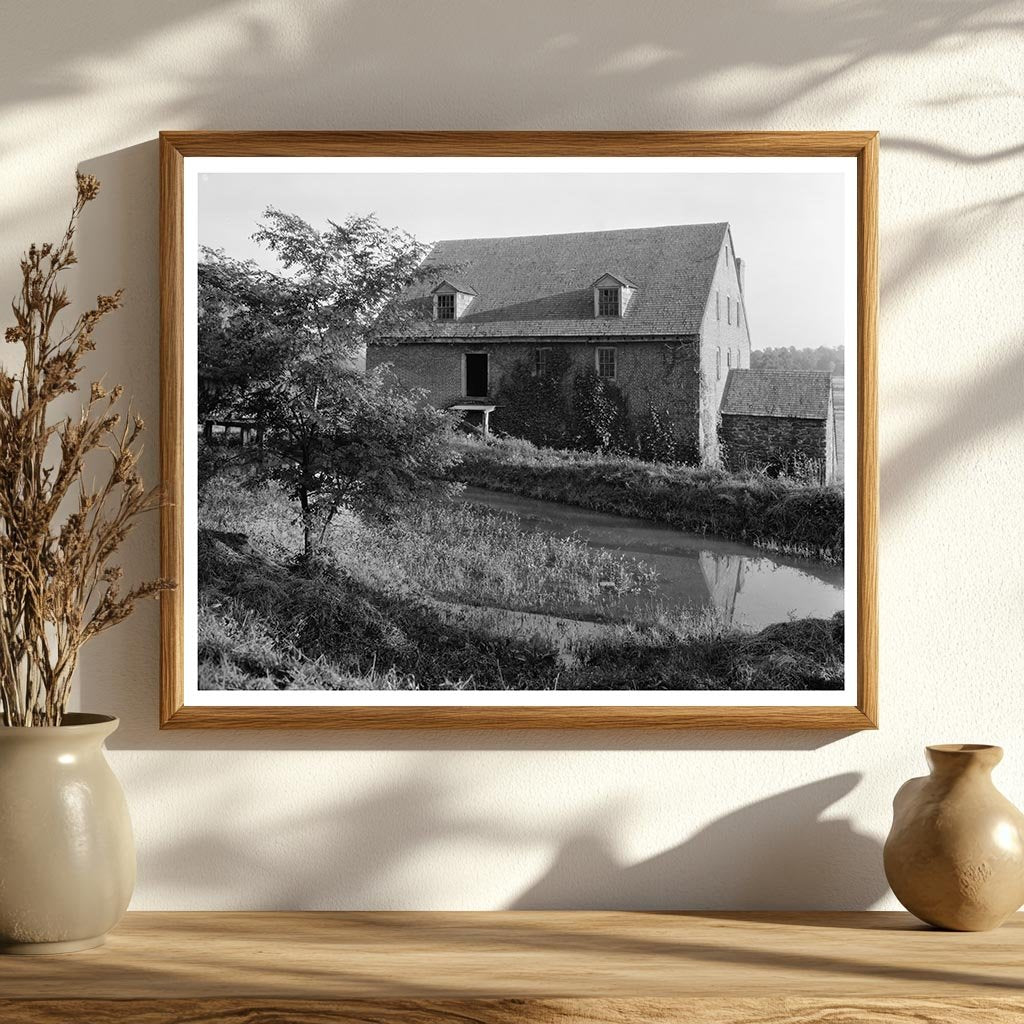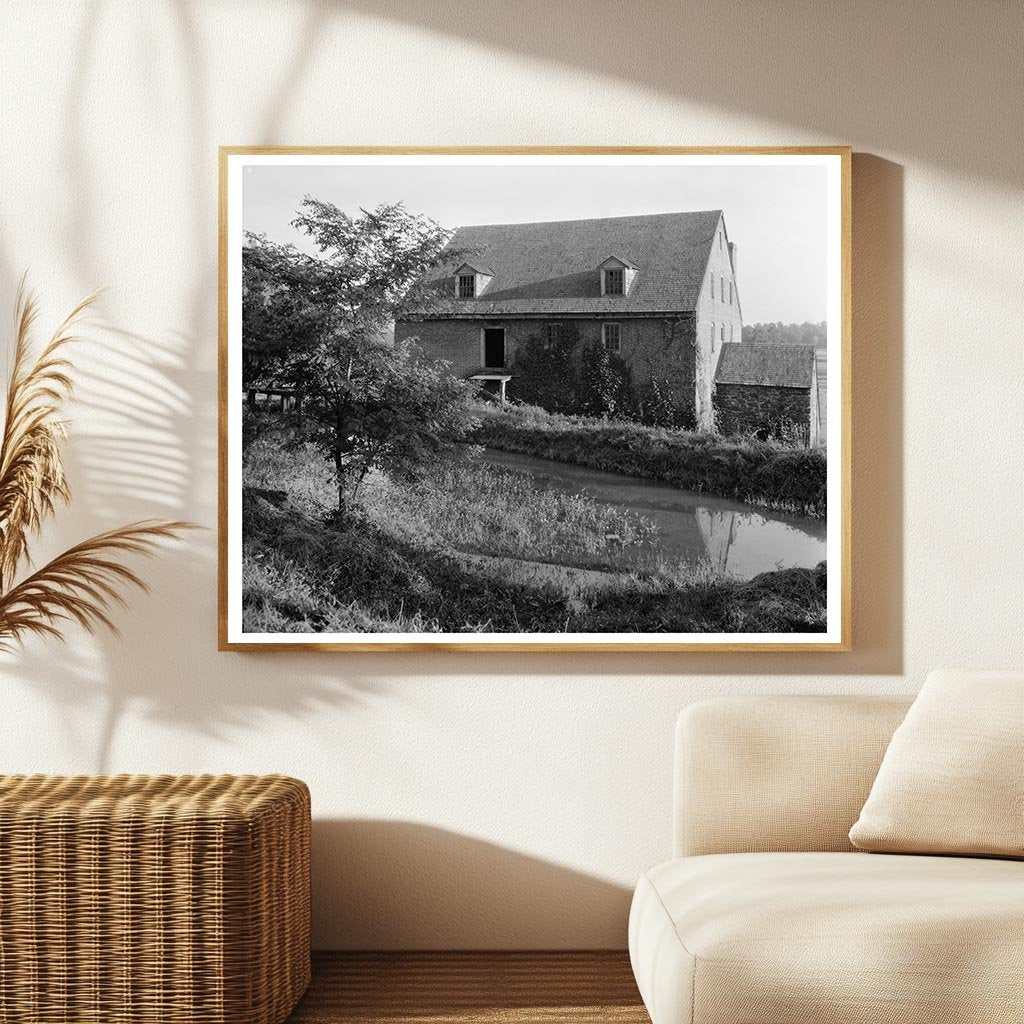



Historic 1725 Structure in Owings Mills, Maryland
This vintage photograph captures a historic structure located in Owings Mills, Baltimore County, Maryland. The building dates back to approximately 1725 and is part of an estate featuring a mansion, a mill, quarters, a spring house, great barns, and additional outbuildings. The architecture exemplifies the early colonial style prevalent in Maryland, showcasing traditional brickwork and a prominent stone chimney, which signifies the areas legacy of hospitality.
The image is part of the Carnegie Survey of the Architecture of the South, an initiative aimed at documenting significant architectural sites in the region. The photograph provides a glimpse into the rich architectural history and cultural heritage of Maryland.
Frances Benjamin Johnston, the photographer, was known for her contributions to capturing historical buildings and landscapes, and this image is a testament to her skill. This photograph serves not only as a visual record but also as an educational resource for those interested in Marylands architectural past.

Historic 1725 Structure in Owings Mills, Maryland
